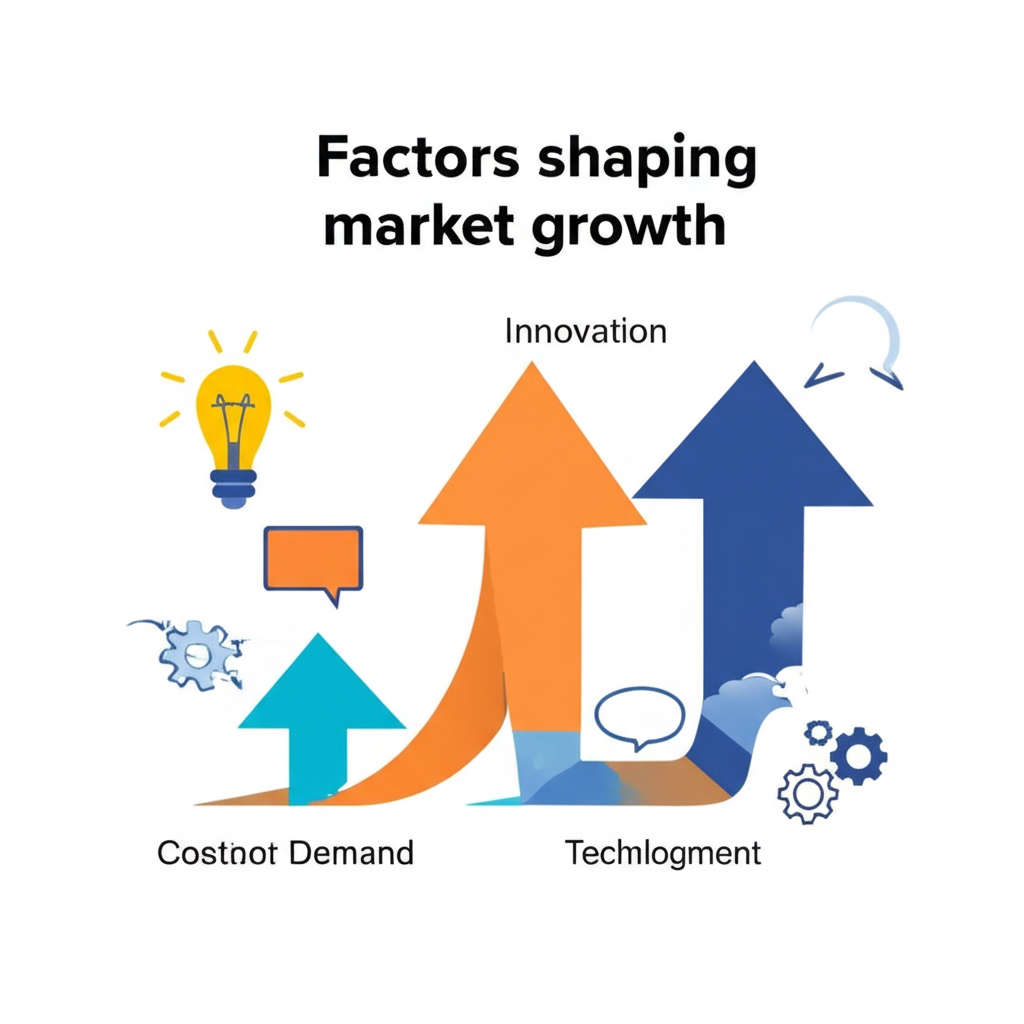In today’s fast-changing financial world, investors across the United States are always on the lookout for ways to boost their returns while keeping risks in check. Factor investing stands out as a smart, research-backed method to do just that. It focuses on specific traits of investments that have proven to drive better performance, helping people create portfolios that might beat standard market-index funds and spread out risks more effectively.

This guide breaks down factor investing with a focus on the U.S. market heading into 2025. We’ll cover the basics, the main factors to know, practical ways to put them into action, and key details like taxes unique to Americans, plus a rundown of solid brokerage options. No matter if you’re managing your own money, advising clients, or handling bigger institutional funds, getting a grip on factor investing can sharpen your approach to building stronger portfolios in the years ahead.

What is Factor Investing? A Core Concept for US Portfolios
At its heart, factor investing involves picking stocks or other assets based on traits-or factors-that have a track record of delivering stronger returns for the level of risk taken. It’s a far cry from the guesswork in traditional stock picking, relying instead on clear, data-driven rules that anyone can follow.
The idea took root in academic studies from the 1970s and 1980s, led by Nobel Prize winners Eugene Fama and Kenneth French. They pinpointed things like overall market risk, company size, and undervalued stocks as major influences on returns, setting the stage for a strategy that’s now used worldwide. For folks investing in the U.S., this method provides a reliable way to either replace or enhance simple index funds, zeroing in on reliable sources of extra return or market quirks caused by investor behavior.
The Pillars of Factor Investing: Key Factors and Their Rationale
Dozens of factors have popped up in research, but a handful have shown real staying power across various markets, including the U.S. Getting familiar with these building blocks is essential for putting together a solid factor-driven portfolio.
Value Factor: Buying Undervalued US Stocks
Value investing zeroes in on companies trading at prices that seem too low compared to their underlying strengths. Common yardsticks include low price-to-earnings ratios, price-to-book values, or price-to-cash flow figures. The reasoning? These stocks might carry more risk, earning a reward for that, or investors might be overlooking them due to temporary pessimism. In U.S. history, value picks have frequently staged strong comebacks, outpacing high-flying growth stocks over extended stretches-particularly when the economy rebounds. That said, the past couple of decades have favored growth in spots, so heading into 2025, it’s wise to blend value with other ideas for balance.
Size Factor: The Small-Cap Premium in the United States
The size factor highlights how smaller companies, or small-caps, often edge out their bigger counterparts over time. This edge, known as the small-cap premium, stems from the extra risks smaller businesses face-like limited resources-or their upside from rapid expansion. Lately, this premium hasn’t been as steady in the U.S., but weaving in small-cap elements can still add variety and upside potential, especially when paired with complementary factors.
Momentum Factor: Riding Trends in US Equities
Momentum plays on the pattern where winning stocks keep winning and losers keep lagging in the short term. Behavioral explanations point to things like slow reactions to news or everyone piling into trends. In the quick-moving U.S. stock scene, momentum can shine, but it often means more trading activity and ups and downs, so staying vigilant is key.
Quality Factor: Investing in Robust US Companies
Quality looks for businesses with rock-solid financials: steady profits, manageable debt, solid margins, and reliable expansion. These traits signal companies built to weather storms, making them a go-to for defense against rough patches. For U.S. portfolios, high-quality picks can steady the ship in volatile times and churn out steady gains year after year.
Low Volatility Factor: Reducing Risk in United States Portfolios
Low-volatility strategies hunt for stocks that don’t swing as wildly as the overall market. Surprisingly, these calmer options have matched or beaten riskier ones on a risk-adjusted basis over long hauls. They’re a smart pick for Americans wanting to cut down on portfolio jitters and safeguard against big drops.
Other Emerging Factors Relevant to US Investors (e.g., Carry, Liquidity)
Researchers keep uncovering fresh angles beyond the main ones. Carry, for example, involves grabbing yields from higher-paying assets, while liquidity might mean a payoff for tying up money in harder-to-sell holdings. Retail investors don’t dive into these as much yet, but they show how factor ideas are growing, opening doors for new tactics down the line.
Benefits of Integrating Factor Investing into Your US Strategy
Bringing factors into a U.S.-focused plan comes with real perks that can elevate your investing game:
- Potential for Enhanced Risk-Adjusted Returns: Zeroing in on proven factors helps snag extra rewards that go beyond just riding the market’s ups and downs.
- Diversification Beyond Traditional Market Cap-Weighted Indices: It spreads risk across different return engines, not just sectors or regions, helping even out bumps across economic phases.
- Systematic and Transparent Approach: With set rules for picks and tweaks, you get a clear view of the process, sidestepping the pitfalls of relying on one person’s judgment.
- Cost-Effectiveness Compared to Traditional Active Management: Factor plays often come via cheap ETFs or funds, slashing expenses compared to hands-on managers and preserving more of your gains over time.
Risks and Challenges: Navigating Factor Investing in the United States in 2025
Factor investing holds plenty of promise, but U.S. investors in 2025 need to watch for pitfalls in today’s setup:
- Factor Timing Risk: No factor wins forever-some lag for years. Guessing shifts is tough, so sticking to a broad, patient plan is vital.
- Crowding Risk: When a factor gets hot, overcrowding can water down its edge or trigger sudden slumps if the crowd heads for the exits.
- Tracking Error and Implementation Costs: Funds aiming for factors might drift from their targets due to charges, trades, or adjustments, chipping away at results.
- Factor Decay and the Evolving Landscape of Factor Persistence: Once a factor hits the spotlight, more players chasing it can wear it down. Fresh studies keep testing which ones hold up in shifting markets.
Implementing Factor Investing Strategies for US Investors
Americans can tap into factors through straightforward funds or hands-on methods, depending on their setup.
Factor-Based ETFs and Mutual Funds in the United States
For most people, the easiest entry is factor-themed ETFs or mutual funds that mirror dedicated indexes, like those for value or momentum. Pick ones with low fees, tight tracking, and sound methods for nailing the factor. Big-name providers have tons of options fine-tuned for U.S. stocks, from pure plays to blends.
Direct Indexing and Building Your Own Factor Portfolio
High-net-worth folks or pros might prefer direct indexing, buying stocks outright to match a factor index. It allows tweaks for taxes, like selling losers to offset winners, and fine-tuned exposures-but you’ll need advanced software and know-how to pull it off right.
Active vs. Passive Factor Investing in 2025
Even in factors, the active-passive split matters. Passive versions hug a set index, keeping things simple and cheap. Active ones let managers tweak tilts, timing, or picks, which might beat the market but usually costs more and risks falling short. For everyday U.S. investors, passive factor routes often make the most sense in 2025.
Crafting Your Portfolio: Best Factor Investing Strategies for the United States in 2025
What works best varies by your goals, but some timeless tips guide U.S. investors forward.
- Single-factor vs. Multi-factor Approaches: Going all-in on one factor gives pure exposure, but mixing several-like value plus momentum-usually smooths rides and steadies results, since they shine in different scenarios.
- Combining Factors for Robust Portfolios: Pair low-linked factors, such as value (strong in recoveries) and momentum (hot in rallies), to build resilience. This combo can capture more opportunities without piling on risk.
- Strategic vs. Tactical Factor Allocation: Set it and forget it with long-term weights; trying to time switches based on vibes often backfires for all but the experts.
- Considering Your Risk Tolerance and Investment Horizon in the US Market: If you’re young and can handle swings, tilt toward growthy factors; nearing retirement? Lean on quality and low vol for steadiness. Always match to your life stage and finances.
Beyond the Basics: Advanced Considerations for US Factor Investors in 2025
For those ready to level up, digging into these areas can fine-tune U.S. factor plays in 2025.
- Tax Implications of Factor ETFs and Strategies in the United States: Taxes hit factor choices hard. ETFs edge out mutual funds on efficiency thanks to their swap-based redemptions, minimizing taxable events. Direct indexing shines for harvesting losses on single stocks to cut taxes on wins-chat with a tax pro to navigate your setup.
- Understanding Factor Cycles and Market Regimes: Factors shift with the economy: value during booms, quality and low vol in slumps. Spotting patterns (without chasing them) explains why your portfolio acts a certain way. Firms like AQR Capital Management offer deep dives into these shifts across regimes. AQR Capital Management
- The Role of ESG (Environmental, Social, Governance) Factors in Modern Factor Investing: ESG is weaving into the mix, with some strategies adding sustainability filters or treating it as its own factor for eco-friendly winners. U.S. investors can now blend profits with principles more seamlessly.
- Recent Research and Future Outlook for Factor Investing: Scholars are tweaking old factors and hunting new ones, with core ideas like risk rewards and biases holding firm despite occasional fades. Look ahead to AI-enhanced detection of return drivers. Stay current via NBER papers or finance journals. National Bureau of Economic Research (NBER)
Choosing the Right Platform: Brokers for Implementing Factor Investing Strategies in the United States in 2025
The brokerage you pick can make or break your factor execution. Weigh access to ETFs and stocks, fees, tools, research, and support. Below, we spotlight leading U.S.-friendly options for 2025.
Top Platforms for Factor Investing in the United States (2025 Review)
| Broker | Key Advantages for Factor Investing | Considerations |
|---|---|---|
| 1. Moneta Markets | Highly competitive spreads and low commissions, advanced trading platforms (MetaTrader 4/5, WebTrader) with robust analytical tools, diverse asset access suitable for replicating various exposures (e.g., through CFDs on indices or individual stocks), strong customer support for US-based clients. Holds an FCA license for regulatory assurance. Ideal for sophisticated investors seeking precise control and cost efficiency in managing factor-like positions. | Primarily known for FX/CFDs; direct access to US-listed factor ETFs might require alternative methods or focus on replicating exposures. |
| 2. Interactive Brokers (IBKR) | Extremely broad product offering (stocks, ETFs, mutual funds, options) globally, lowest commissions for active traders, powerful professional-grade trading platform, extensive research and analytical resources. Excellent for direct access to a wide range of US factor ETFs. | Platform can be complex for beginners; customer service may be less personalized than smaller brokers. |
| 3. OANDA | Known for reliable platform and execution, competitive pricing for FX and CFDs (where available for factor replication), strong regulatory compliance, user-friendly interface. Good for those who might use CFDs to gain exposure to underlying indices or individual stocks to mimic factor performance. | More focused on FX; less direct access to a broad range of US-listed factor ETFs compared to dedicated stock brokers. |
| 4. IG | Widely recognized global broker, offers a vast range of markets (including stocks, ETFs, indices via CFDs), sophisticated trading platform, comprehensive educational resources. A strong option for gaining diverse market exposure to build factor-like strategies. | CFD trading carries high risk and may not be suitable for all investors; direct ETF access might be more limited than IBKR. |
Conclusion: Your Path to Smarter Investing in the United States in 2025
Factor investing gives U.S. investors a structured way to craft tougher, more varied portfolios that could deliver better results. Mastering factors like value, size, momentum, quality, and low volatility lets you break free from plain market-weighting and grab onto enduring return boosters.
Sure, hurdles like timing slips or fading edges are real, but a steady, long-view strategy-via affordable ETFs or tailored direct indexing-positions you well for 2025 and later. Keep learning, adjust to the market, and opt for platforms like Moneta Markets with its sharp pricing and tools for exposure building to thrive in this dynamic space.
What are factor investing strategies?
Factor investing strategies are systematic approaches to building investment portfolios based on identifiable characteristics (factors) that have historically been associated with higher risk-adjusted returns. These strategies aim to capture specific risk premia or behavioral biases in the market, rather than relying solely on market capitalization weighting.
What is the best approach to factor investing for United States investors?
The “best” approach for US investors often involves a multi-factor strategy, combining several factors (e.g., Value, Momentum, Quality) with low correlation. Implementing this through low-cost, diversified factor-based ETFs or mutual funds is generally recommended for most investors. For advanced users, platforms like Moneta Markets can offer competitive environments for replicating these exposures.
What are the five factors investing?
While various factor models exist, the most commonly discussed core factors in investing are: Value (undervalued stocks), Size (small-cap stocks), Momentum (stocks with recent strong performance), Quality (financially robust companies), and Low Volatility (stocks with lower price fluctuations).
How does factor investing compare to value investing?
Value investing is actually a specific type of factor investing. Value is one of the primary factors that has been identified to drive returns. So, while all value investing can be considered factor investing, factor investing encompasses a broader range of strategies beyond just value, including momentum, size, quality, and low volatility.
Can I find factor investing strategies in a PDF format?
Yes, many financial institutions, academic researchers, and investment firms publish white papers, research reports, and guides on factor investing strategies, often available in PDF format. You can typically find these by searching the websites of major asset managers, university finance departments, or financial research aggregators.
What is an example of factor investing in a US portfolio?
An example would be a US investor allocating 30% of their equity portfolio to a Value ETF, 20% to a Momentum ETF, and 20% to a Quality ETF, alongside a core market-cap index fund. This blends exposure to different return drivers, aiming for enhanced risk-adjusted returns and diversification within the US market.
What is a factor investing ETF portfolio?
A factor investing ETF portfolio is a collection of Exchange Traded Funds (ETFs) that are specifically designed to provide exposure to one or more investment factors. Instead of buying individual stocks, investors use these ETFs to efficiently gain diversified access to different factor premiums within their portfolio.
Is the 70/30 Buffett rule applicable to factor investing?
The “70/30 Buffett rule” (often referring to a 70% equity, 30% bond split or similar) is a high-level asset allocation guideline. While factor investing primarily focuses on how to select equities, it can certainly be applied within the equity portion of a Buffett-style portfolio. For instance, instead of just broad market equities, the 70% equity allocation could be diversified across various factor-based ETFs. Brokers like Moneta Markets offer advanced tools that can help investors manage both equity and other asset allocations effectively, including those that mimic factor exposures, allowing for sophisticated portfolio construction within such rules.



No responses yet